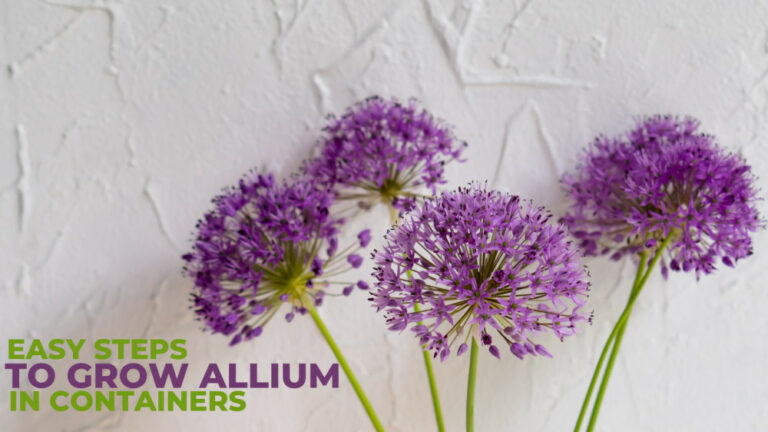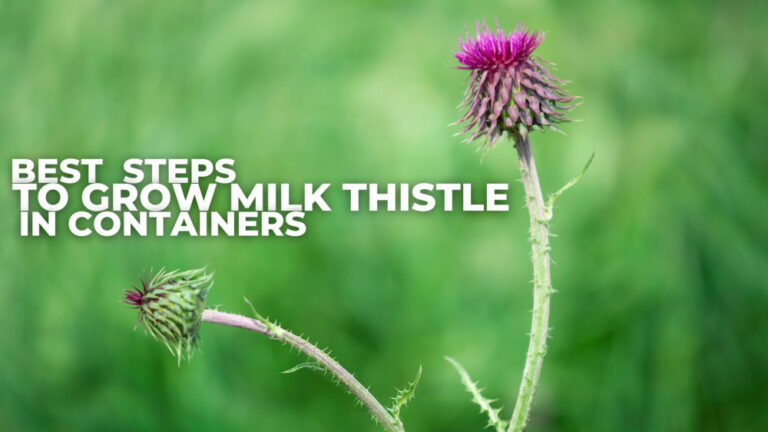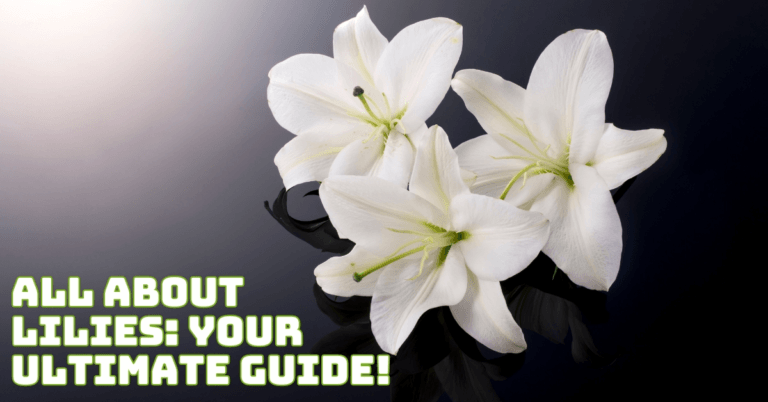Best Container-Grown Vegetables
Best Container-Grown Vegetables: The Ultimate Guide
One of the best ways to cultivate container-grown vegetables is through container gardening. It provides a practical and rewarding way to increase your produce in limited spaces, whether on a small balcony, patio, or indoors.
This guide will teach you everything you need to know about cultivating healthy, productive, container-grown vegetables.
You will discover how to get the most out of your garden, from picking the ideal crops for tiny spaces to choosing the appropriate containers and soil. Enjoy fresh, homegrown produce, even without a traditional garden plot!
Benefits Of Container Gardening
Container gardening offers a versatile and accessible way to grow vegetables, even in small spaces like patios, balconies, or indoors. Here are the key benefits of container gardening explained in a humanizing way:
1. Space Efficiency
Even if you live in a small apartment or have no yard, container gardening lets you grow fresh vegetables on balconies, patios, or windowsills. It's perfect for those who love gardening but don't have much space, allowing you to cultivate a mini garden anywhere.
2. Mobility
Unlike traditional gardens, container plants are easy to move. You can follow the sunlight by shifting them throughout the day or sheltering them from harsh weather. This flexibility makes it easier to ensure your vegetables thrive in changing conditions.
3. Soil Control
In container gardening, you control the soil quality. Choose the best mix for each vegetable to provide the perfect nutrients and drainage.
This level of customization leads to healthier plants that grow better and produce more, making your gardening efforts even more rewarding.
4. Pest And Disease Management
Growing vegetables in containers helps reduce the chance of soil-borne diseases and pests. Since you can refresh the soil easily and control the environment, your plants have a better chance of staying healthy and productive.
5. Water Efficiency
Watering plants efficiently is easier with containers. Water goes directly to the roots, reducing waste and keeping the soil moist longer. This conserves water and ensures your plants get what they need to flourish.
6. Extended Growing Season
Container gardening allows you to move plants indoors or to warmer spots. It lets you grow vegetables earlier in the year or continue growing them longer into the colder months, maximizing your harvest season.
7. Versatility
Container gardening allows you to grow leafy greens, herbs, or even tomatoes. This versatile method lets you experiment with different plants, offering a fun way to grow fresh produce no matter how much or how little space you have.
8. Easy Accessibility
Containers can be placed at different heights, making gardening easier for those with physical limitations. Raised containers or hanging baskets reduce the need for bending or kneeling, making the process more accessible and enjoyable.
9. Aesthetic Appeal
Containers in various shapes, sizes, and colours can add a decorative element to your yard or house. Your surroundings will look more appealing when you organize them to form a lovely green area.
10. Weed Control
Weed control is simpler in container gardens, making it easier to maintain your garden while growing container-grown vegetables, as you can easily spot and remove any weeds that appear. You can easily spot and remove any weeds that appear, reducing the effort needed for garden maintenance.
11. Environmentally Friendly
Container gardening can help reduce your carbon footprint by encouraging local, homegrown produce. Growing your vegetables at home means fewer trips to the grocery store and less reliance on industrial farming, which reduces energy use and emissions.
12. Educational Experience
Container gardening provides an excellent opportunity for hands-on learning, whether teaching children about plants, experimenting with new growing techniques, or just learning how to care for different vegetables.
13. Experimentation Opportunities
Containers allow you to experiment with different plants, soil types, and growing conditions. This flexibility will enable gardeners to try new things without the commitment or space required by a traditional garden.
14. Cost-Effective
Starting a container garden can save money in the long run. Growing your vegetables can reduce grocery bills, while the initial investment in containers and soil is relatively low.
Container-Grown Vegetables
Vegetables that do well in containers include the following:

1. Tomatoes
Tomatoes thrive in containers, especially cherry and dwarf varieties. They require at least 6-8 hours of sunlight and well-draining soil.
- Growing Tips: Use a container at least 18 inches deep. Plant deeply to encourage strong root growth and ensure good airflow. Choose a balanced fertilizer for optimal growth.
- Care Tips: Regularly check the soil's moisture; water it when the top inch is dry. Support the plants with stakes or cages as they grow. Remove any yellowing leaves to promote healthy growth.

2. Radishes
Radishes are fast-growing and do well in shallow containers. They need a sunny spot and loose soil.
- Growing Tips: Plant seeds directly in a container at least 6-8 inches deep. Ensure the soil is well-aerated for proper root development.
- Care Tips: Water consistently to prevent splitting. Thin seedlings give each radish enough space to grow. Harvest as soon as they reach a desirable size for the best flavour.
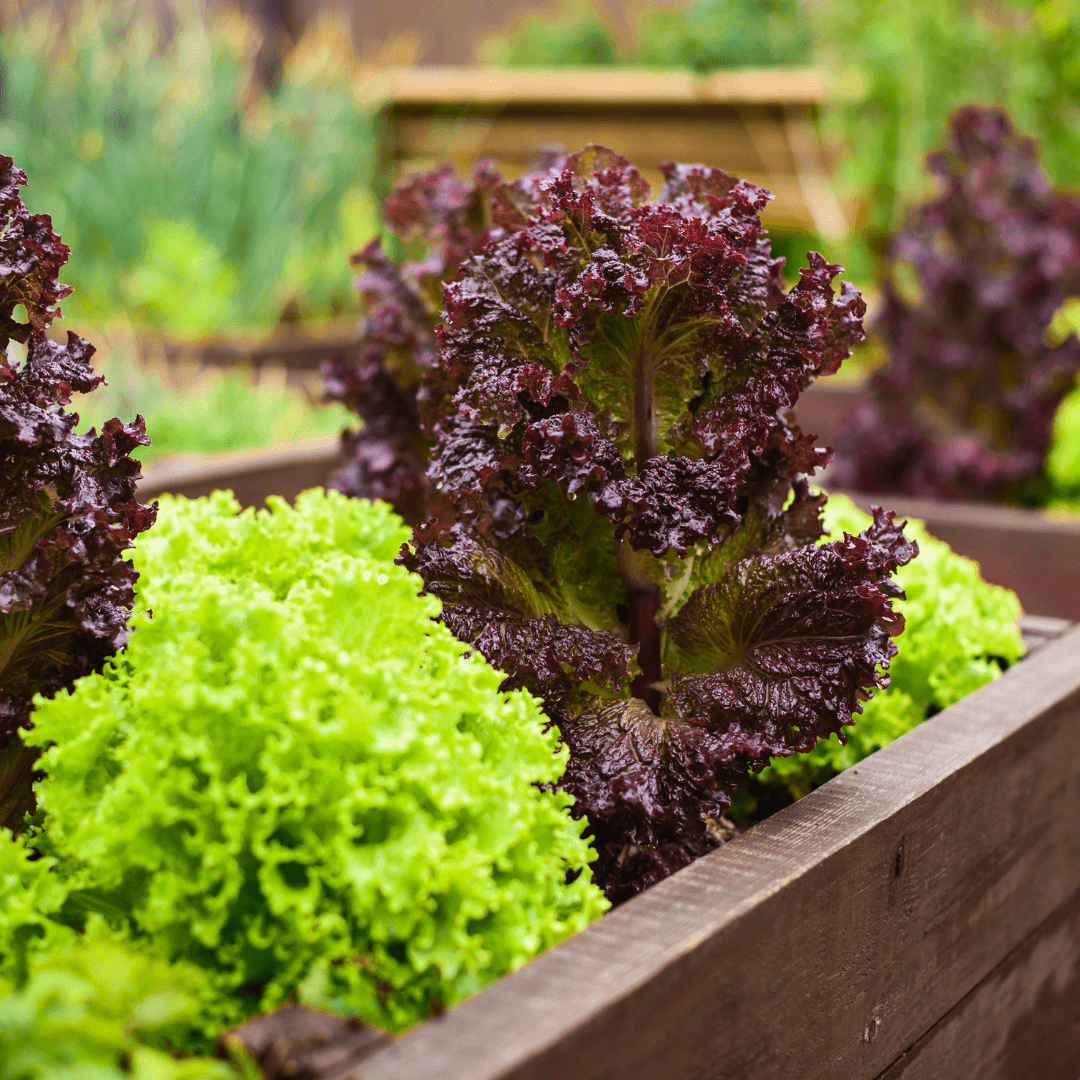
3. Lettuce
Lettuce is ideal for shallow containers and grows quickly in cooler weather. It needs partial sun and consistent moisture.
- Growing Tips: Plant lettuce in cool weather, providing partial sunlight. Keep soil moist and well-drained, rich in organic matter. Space plants are used for airflow and are harvested regularly to encourage fresh growth. Avoid extreme heat.
- Care Tips: Water lettuce regularly, ensuring the soil stays moist but not soggy. Provide partial sunlight and space for air circulation to prevent rot. Harvest outer leaves first, promoting continuous growth. Keep soil nutrient-rich.
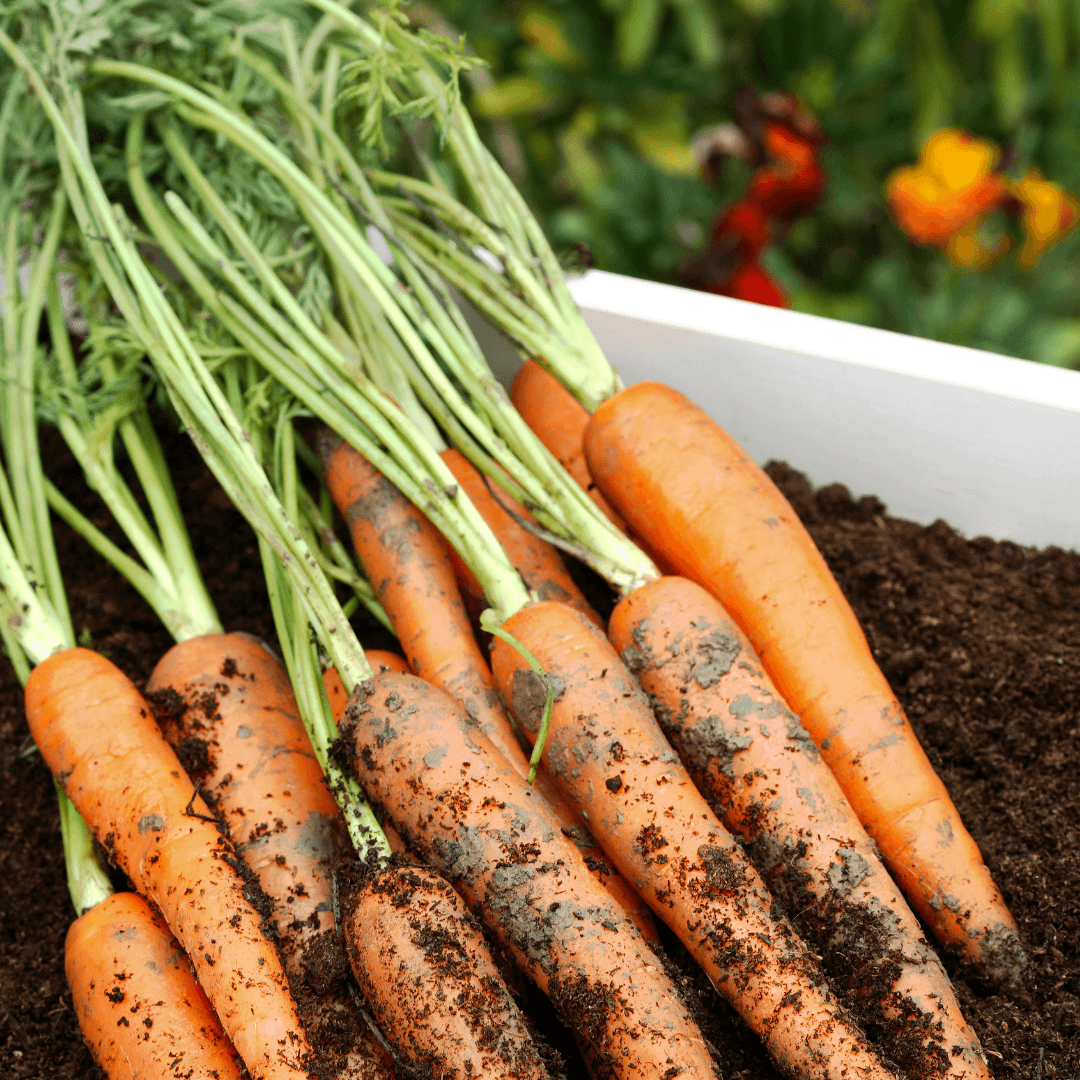
4. Carrots
Short carrot varieties like ‘Thumbelina’ are perfect examples of container-grown vegetables that thrive in containers. They require deep, loose soil and full sun.
- Growing Tips: For proper root development, use a container 12 inches deep. Loose, sandy soil is best for growing carrots.
- Care Tips: Water evenly, keeping the soil moist but not soggy. Thin seedlings to prevent overcrowding, allowing for healthy root growth. Harvest when they reach the desired size.
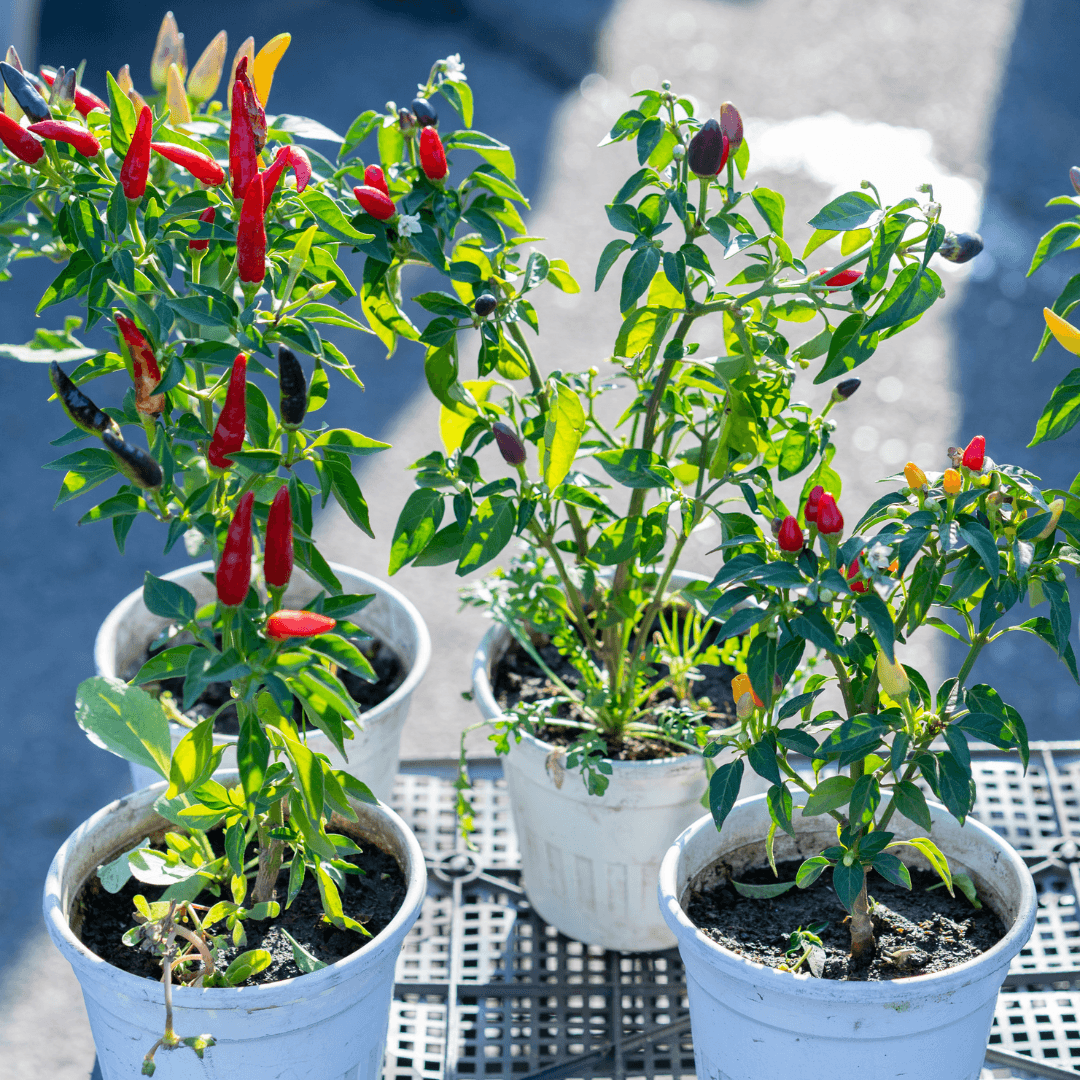
5. Peppers
Sweet and spicy peppers grow well in pots. They need well-draining soil and a warm, sunny spot.
- Growing Tips: Select a container that’s at least 12 inches deep. For best results, use a potting mix enriched with organic matter.
- Care Tips: Water regularly, but allow the top inch of soil to dry between waterings. Fertilize with a high-potassium fertilizer to promote fruit production. Support taller varieties with stakes.
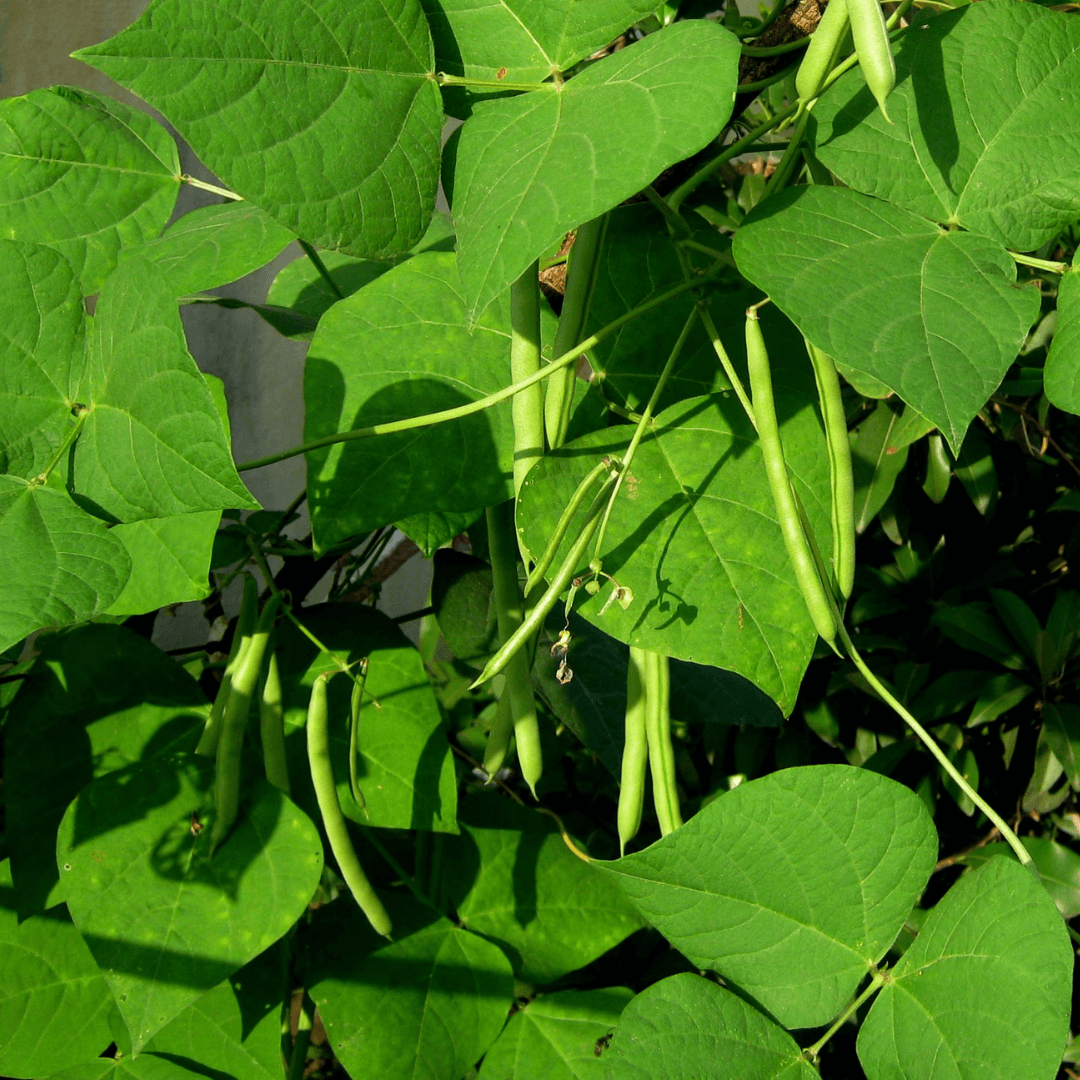
6. Green Beans
Both bush and pole beans thrive in containers. Bush beans do not require support, while pole beans need a trellis.
- Growing Tips: Plant in a container at least 12 inches deep. Bush varieties are great for smaller spaces, while pole beans require vertical support.
- Care Tips: Water consistently and check for soil moisture regularly. Fertilize lightly at planting and when beans start to form. Harvest regularly to promote continuous growth.
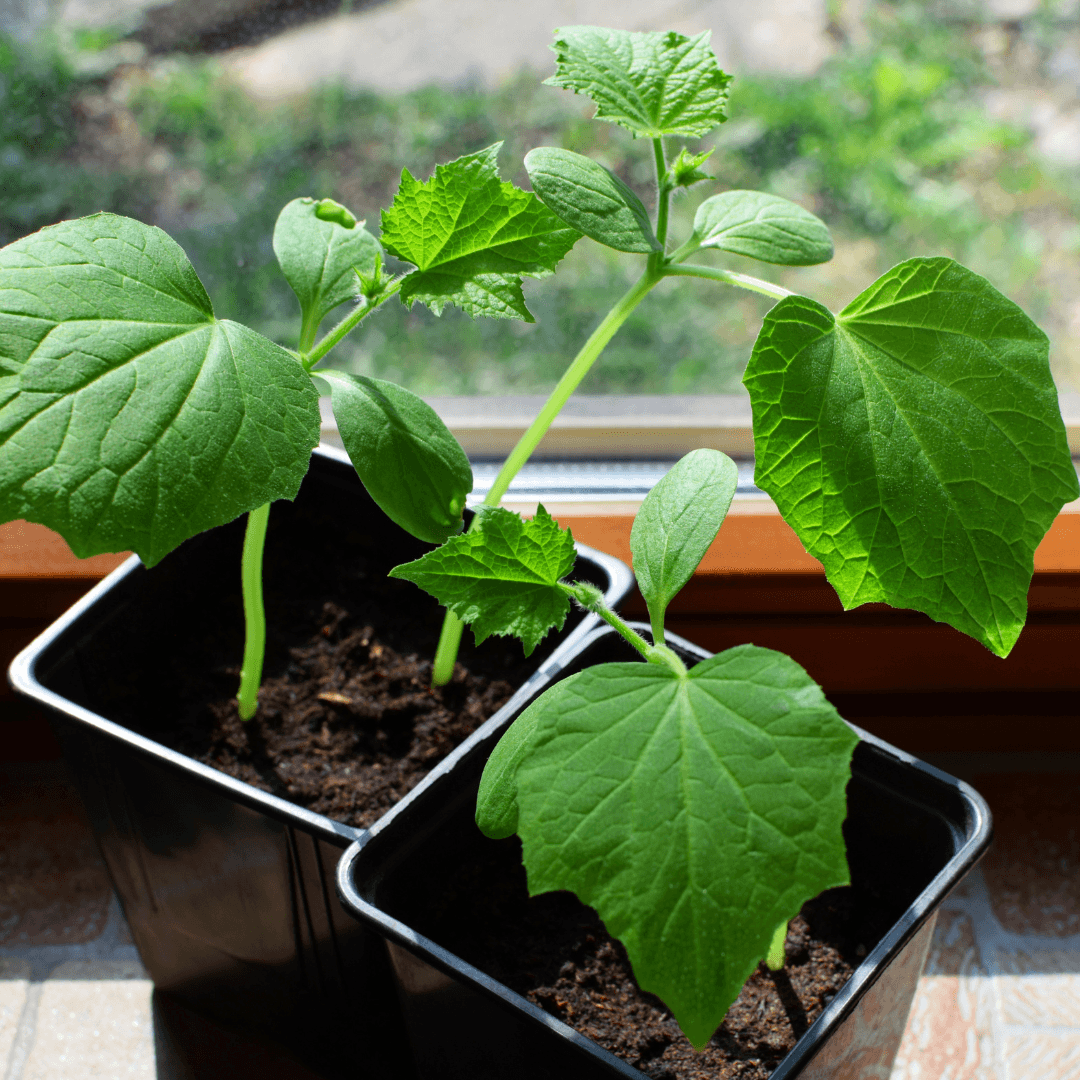
7. Cucumbers
Compact cucumber varieties are perfect for containers. They need full sun and regular watering.
- Growing Tips: Choose a container that’s at least 12 inches deep. Use a trellis to support vining varieties, allowing for better airflow.
- Care Tips: Water consistently, ensuring the soil is moist but not soggy. Apply a balanced fertilizer every few weeks. Harvest cucumbers regularly to encourage further production.
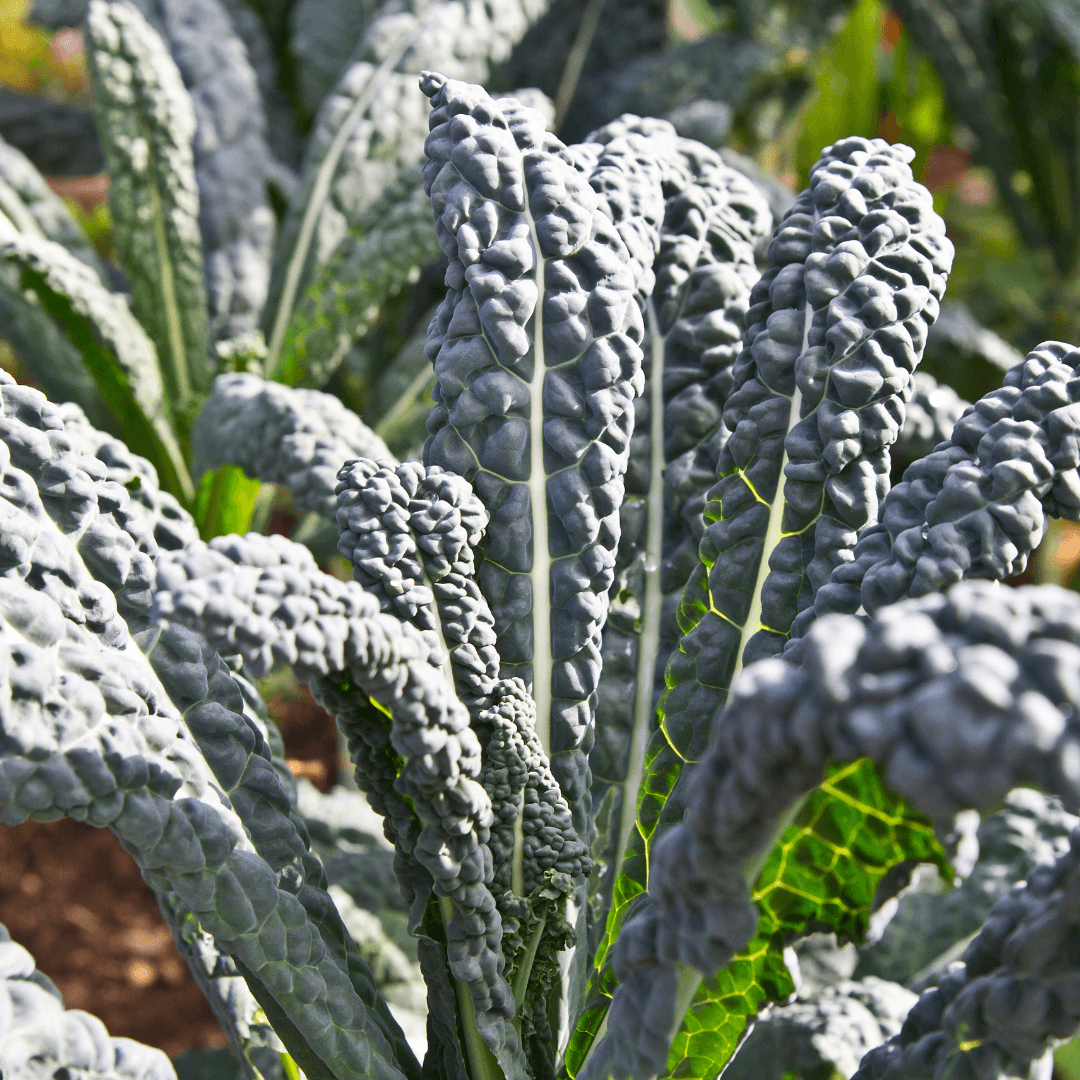
8. Kale
Kale is a tough green that can withstand colder weather. It requires a container with a minimum depth of 12 inches.
- Growing Tips: Sow seeds directly or transplant seedlings in well-draining soil. Kale grows best in full or partial sun.
- Care Tips: Keep the soil evenly moist. Harvest outer leaves regularly to encourage continued growth. Fertilize lightly every few weeks for optimal health.
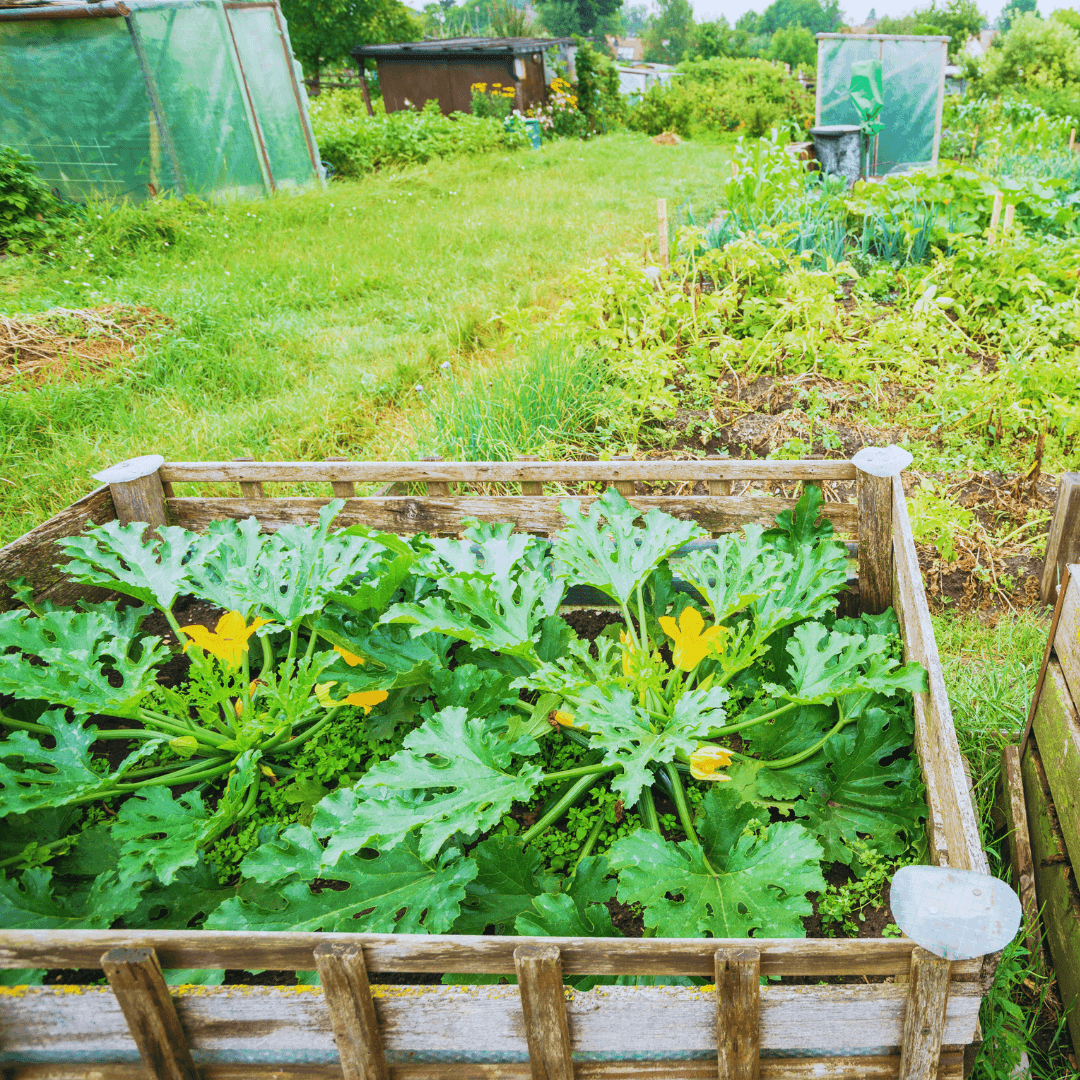
9. Zucchini
Zucchini grow well in large containers; dwarf or bush varieties are best suited.
- Growing Tips: Use a container at least 18 inches deep and wide, and plant in well-draining, nutrient-rich soil.
- Care Tips: Water the soil frequently, letting it dry out between applications. Harvest zucchini often to encourage more fruit production. Ensure plenty of sunlight for healthy growth.
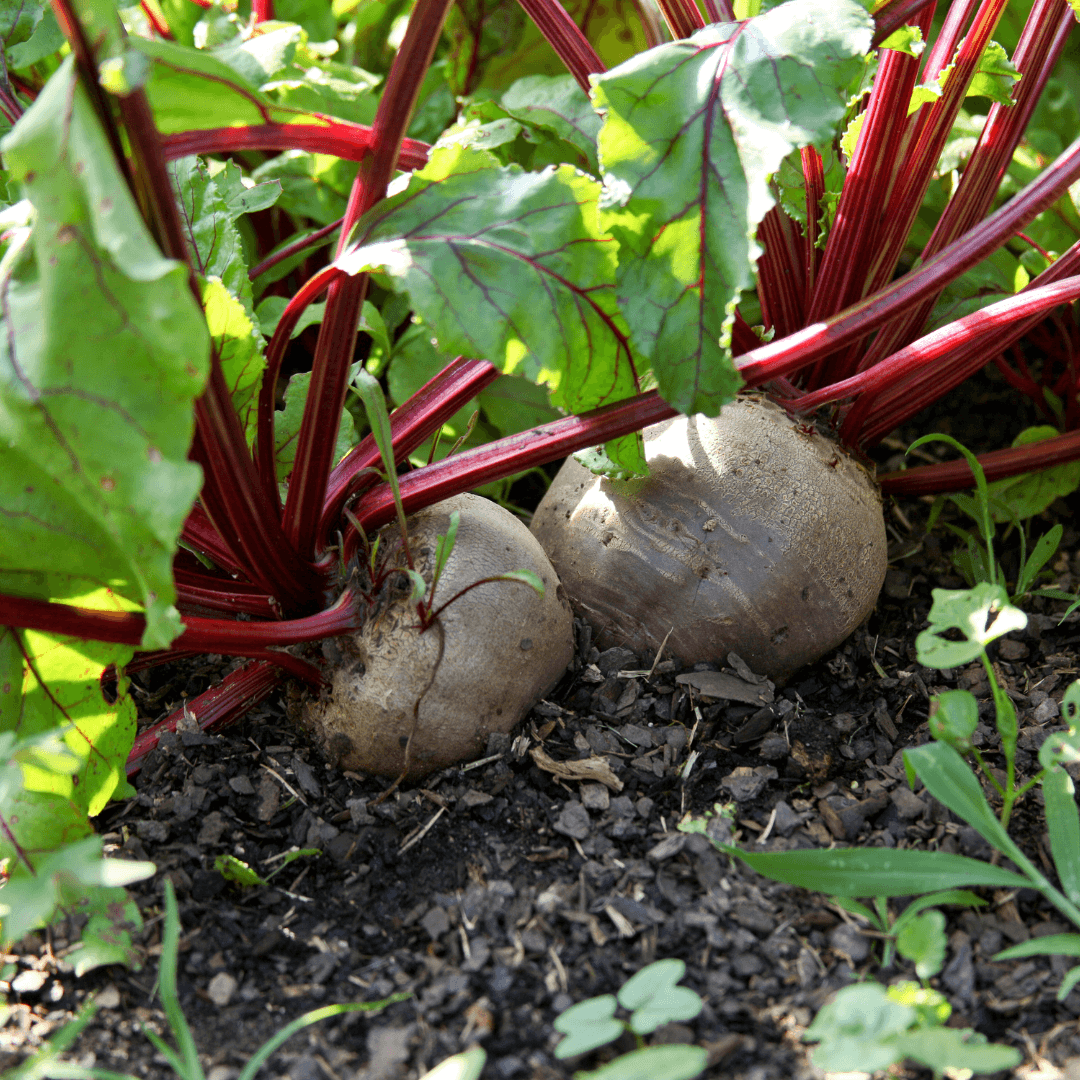
10. Beets
Beets thrive in containers at least 12 inches deep and prefer cooler weather.
- Growing Tips: Grow beets in loose, fertile soil for best results. Sow seeds directly in the container.
- Care Tips: Water regularly, keeping the soil consistently moist. Harvest roots and greens for a nutritious meal addition—thin seedlings to prevent overcrowding.
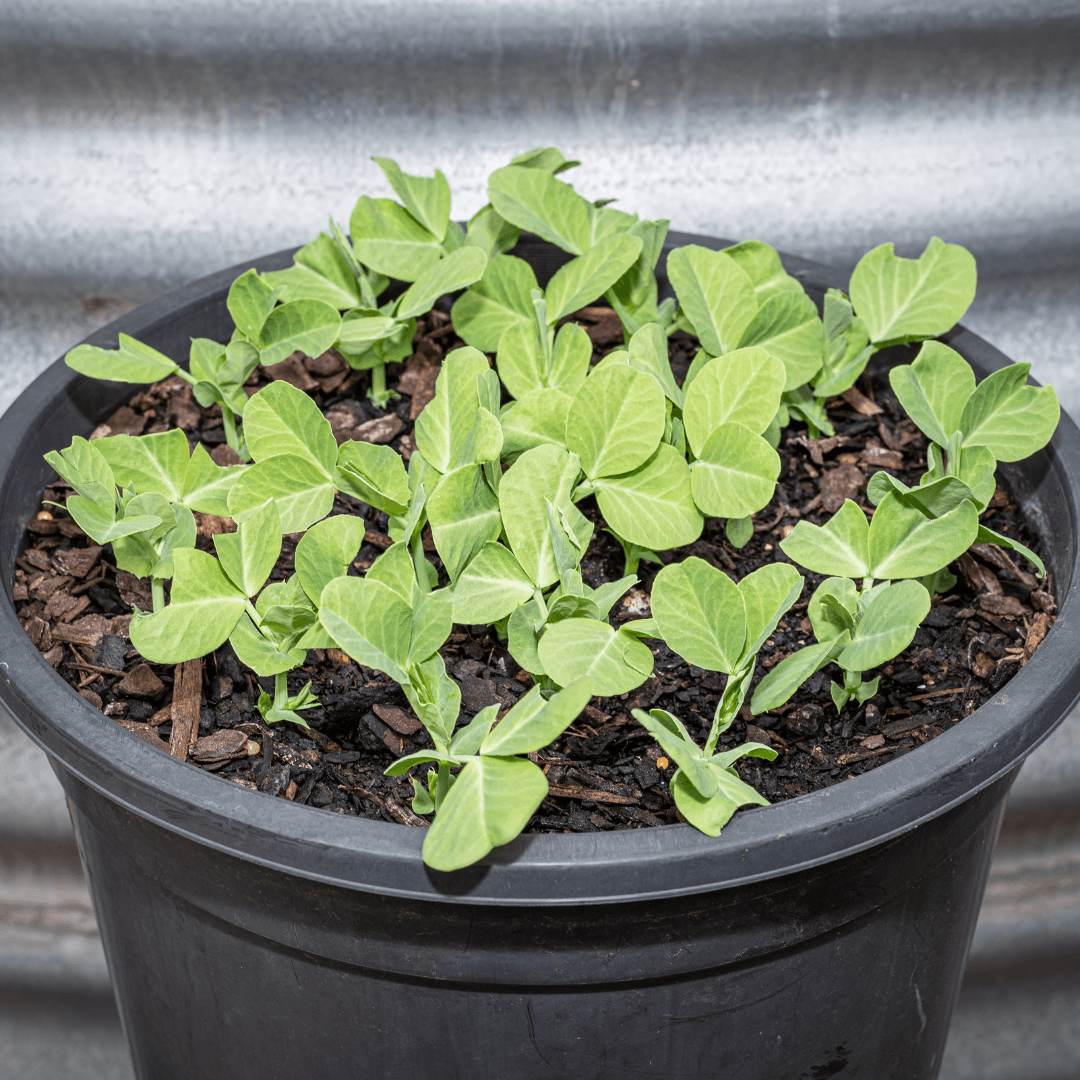
11. Peas
Peas prefer cool weather and need a support system like a trellis.
- Growing Tips: Plant at least 8-12 inches deep in a container. Choose a trellis or netting to support the plants as they grow.
- Care Tips: Frequently water, particularly in arid periods. Fertilize lightly at planting. Harvest peas frequently to encourage continuous production.
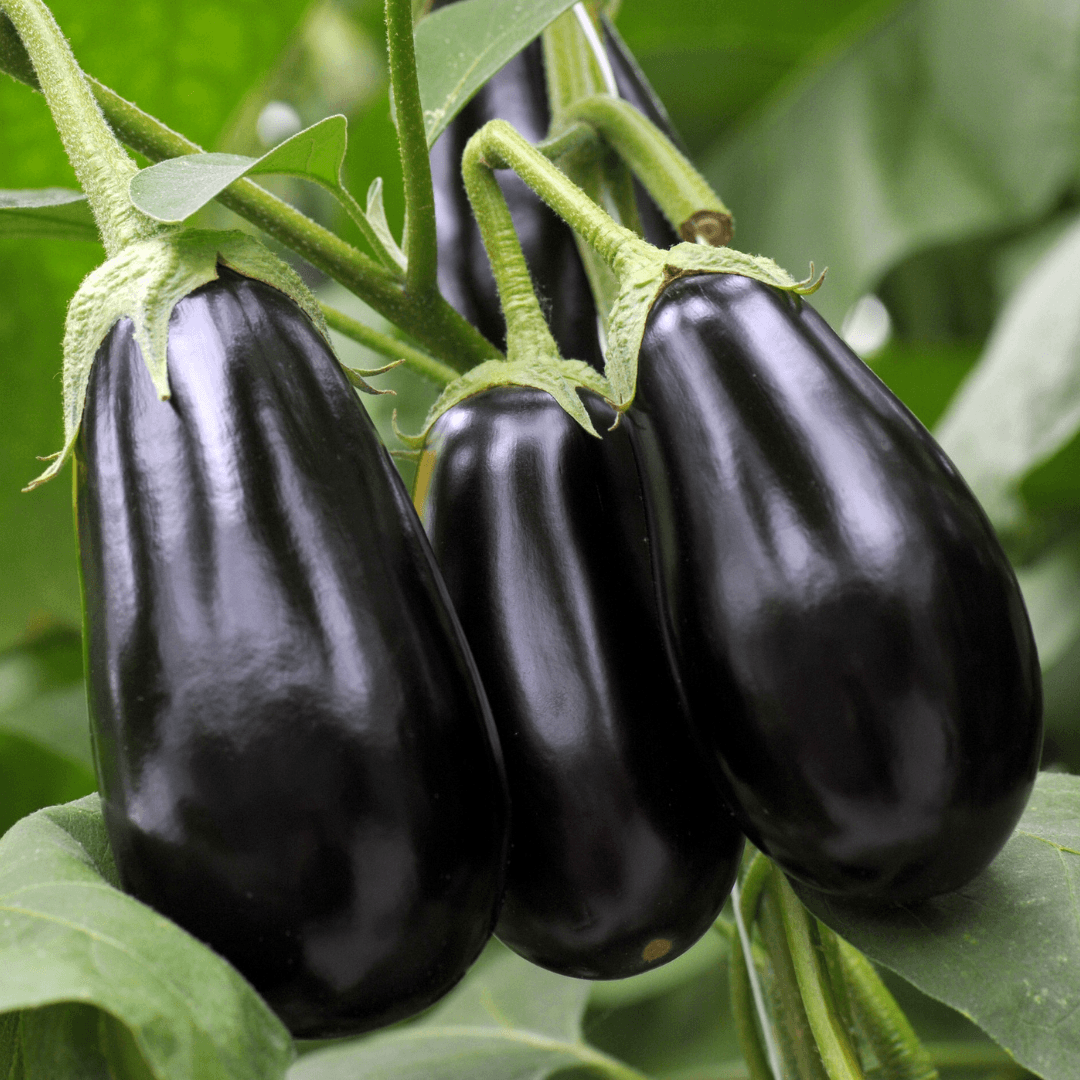
12. Eggplant
Eggplants are among the best container-grown vegetables. They prefer warm weather and full sun, making compact or dwarf varieties ideal for container gardening.
- Growing Tips: Choose a container at least 12-14 inches deep. Use rich, well-draining soil and provide adequate spacing.
- Care Tips: Water consistently to keep the soil moist. Apply a balanced fertilizer every few weeks. Support plants with stakes or cages as they grow to prevent breaking.

12. Herbs (Basil, Mint, Parsley, etc.)
Most herbs are excellent choices among container-grown vegetables, thriving in containers due to their compact size and adaptability.
- Growing Tips: Use well-draining soil and containers that allow for drainage. Choose sunny spots for herbs like basil, while mint prefers partial shade.
- Care Tips: Water regularly, ensuring the soil is moist but not soggy. Prune frequently to encourage bushy growth. Harvest leaves regularly for continuous production.

13. Swiss Chard
Swiss chard grows well in containers and allows for continual harvesting.
- Growing Tips: Choose a container that’s 10-12 inches deep. Sow seeds or transplant seedlings in well-draining soil.
- Care Tips: Maintain damp but not soggy soil. Regularly harvest outer leaves to promote new growth. Provide at least 6 hours of sunlight for best results.
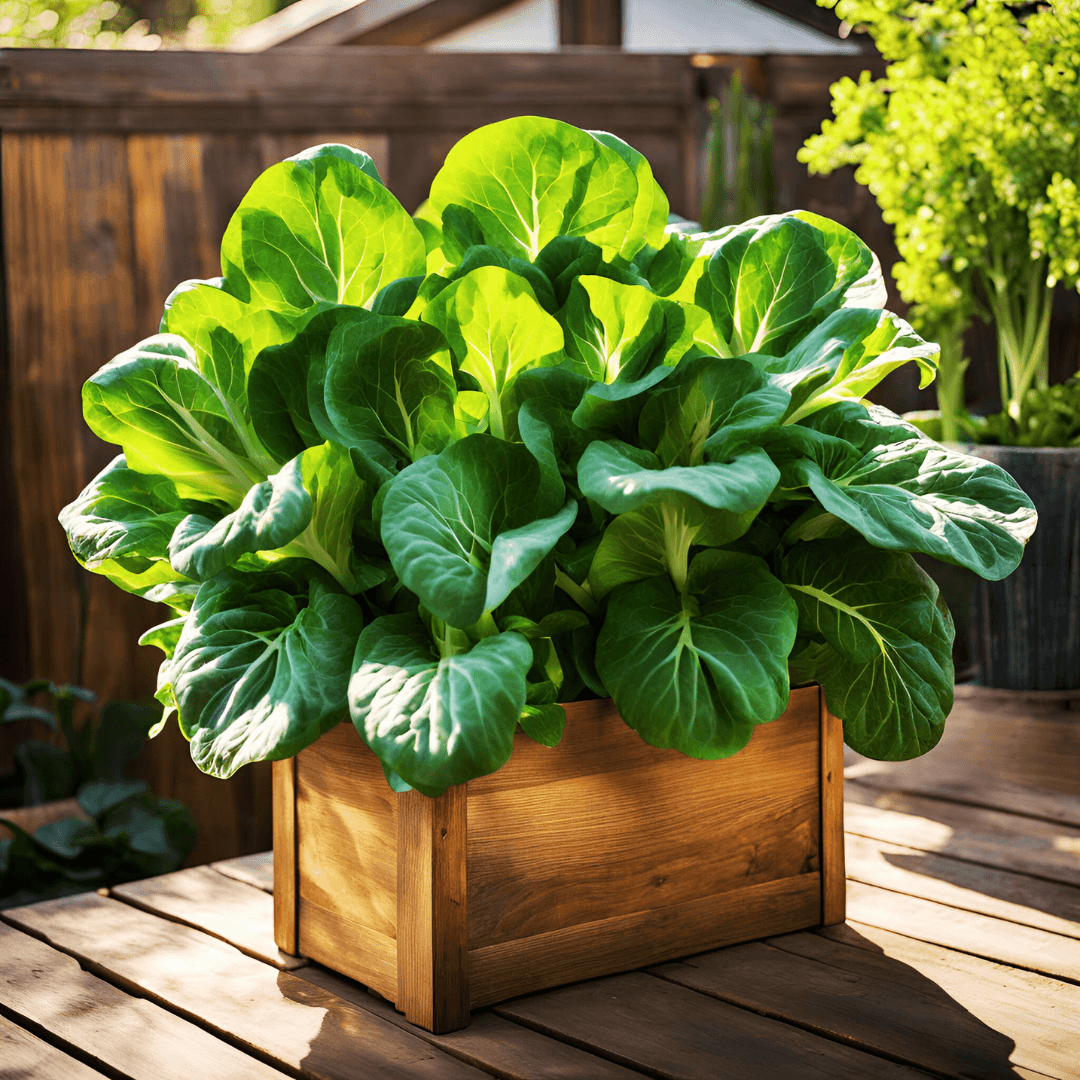
14. Bok Choy
Bok choy is a fast-growing Asian green that does well in containers, adding a crisp texture to dishes.
- Growing Tips: Use a container at least 10-12 inches deep. Sow seeds directly in well-draining soil or transplant seedlings. Bok choy thrives in cool temperatures, ideal for spring or fall planting.
- Care Tips: Keep the soil moist and fertilize lightly every few weeks. Harvest outer leaves as needed, allowing the inner leaves to continue growing. Watch for bolting in warmer temperatures and harvest promptly.
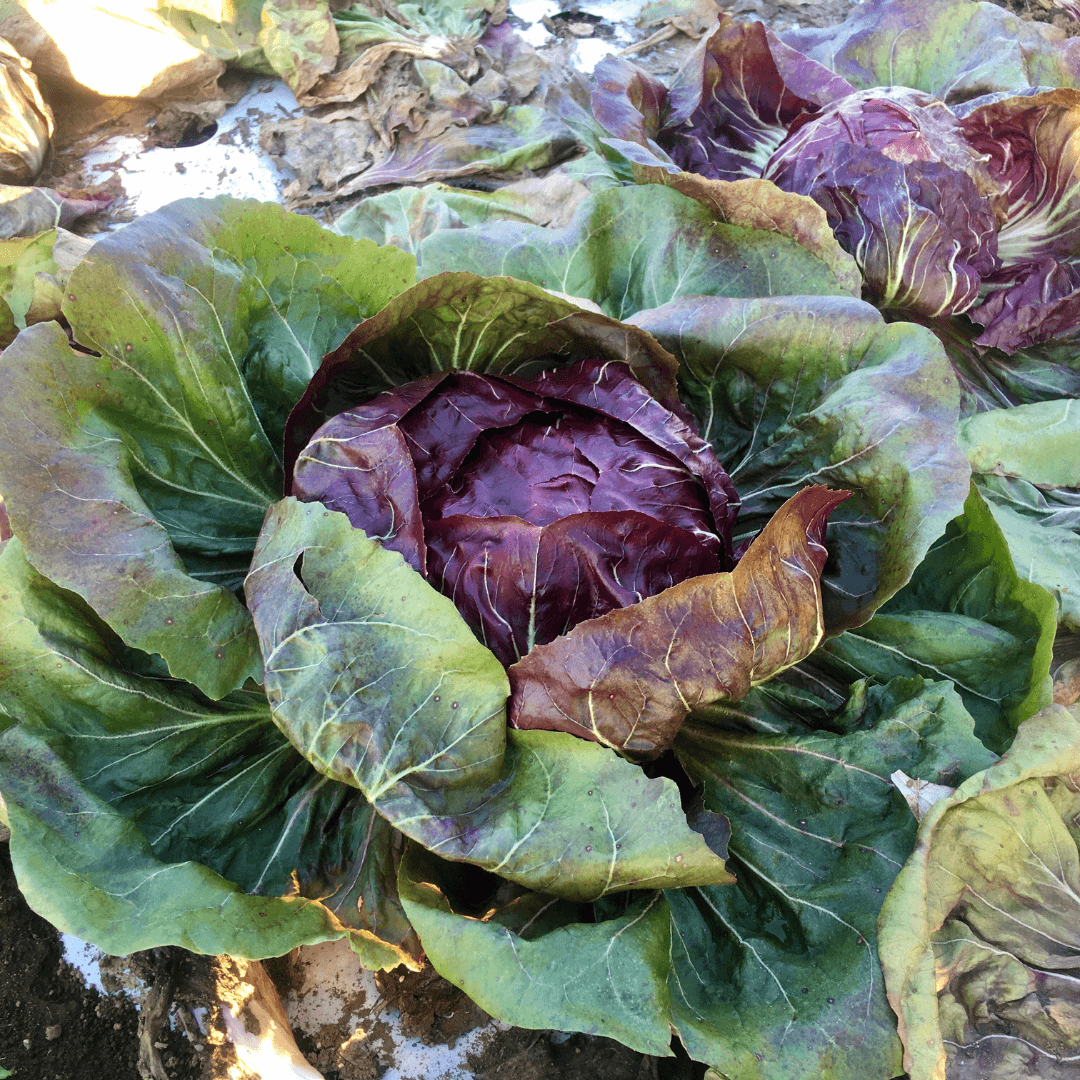
15. Radicchio
Radicchio is a leafy vegetable that grows well in containers. Its slightly bitter flavour is perfect for salads.
- Growing Tips: Choose a container at least 12 inches deep—plant seeds or transplants in well-draining soil enriched with organic matter. Radicchio thrives in cooler weather, so consider planting in early spring or late summer.
- Care Tips: Water regularly to moisten the soil, especially during hot weather. Fertilize using a balanced organic fertilizer every few weeks. Harvest when heads are firm but not overripe for the best flavour.
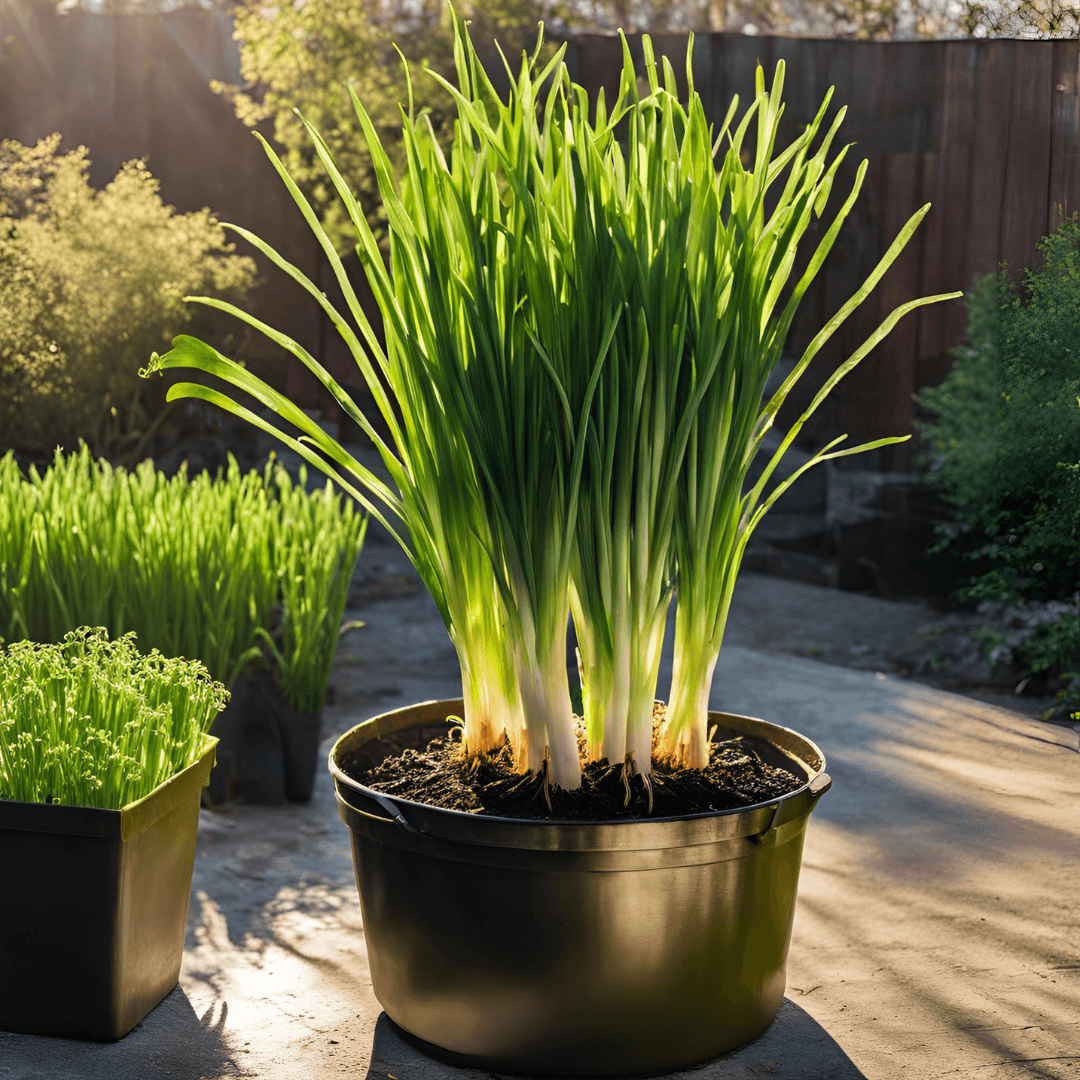
16. Scallions (Green Onions)
Scallions are an ideal option for container-grown vegetables, requiring minimal space and allowing for continuous harvesting.
- Growing Tips: Use a container at least 6-8 inches deep. Sow seeds or plant sets in well-draining soil. Scallions thrive in full sun, so ensure they get at least 6 hours of sunlight daily.
- Care Tips: Water the soil often to keep it damp but not drenched. Apply a well-balanced fertilizer every several weeks. Harvest the green tops as needed, allowing the bulbs to continue growing.

17. Sweet Potatoes
Large containers can be used to cultivate sweet potatoes, which produce tasty tubers and eye-catching vine foliage.
- Growing Tips: Use a deep container (at least 12-16 inches) filled with well-draining soil. Plant slips or small tubers in warm soil after the last frost. Ensure adequate spacing between plants for healthy growth.
- Care Tips: Water consistently, especially during dry periods, to prevent the tubers from becoming woody. Fertilize with a high-phosphorus fertilizer to promote root development. Harvest before the first frost for the best flavour and texture.

18. Chard
Chard is a nutritious leafy green that thrives in containers and offers a colourful addition to your garden.
- Growing Tips: Choose a container at least 10-12 inches deep. Sow seeds directly or transplant seedlings in nutrient-rich, well-draining soil. Chard can tolerate heat, making it versatile for various seasons.
- Care Tips: Water consistently to keep the soil moist. Fertilize with an all-purpose organic fertilizer every few weeks. Harvest outer leaves regularly to promote new development and a continual harvest.

19. Mustard Greens
Mustard greens are a spicy, nutritious, leafy vegetable that grows quickly in containers.
- Growing Tips: Use a container at least 10-12 inches deep filled with well-draining soil. Sow seeds directly or transplant seedlings in full sun for best results.
- Care Tips: Keep the soil moist and fertilize lightly every few weeks. Harvest leaves when they are young for a milder flavour. Watch for pests and remove them promptly to ensure healthy plants.
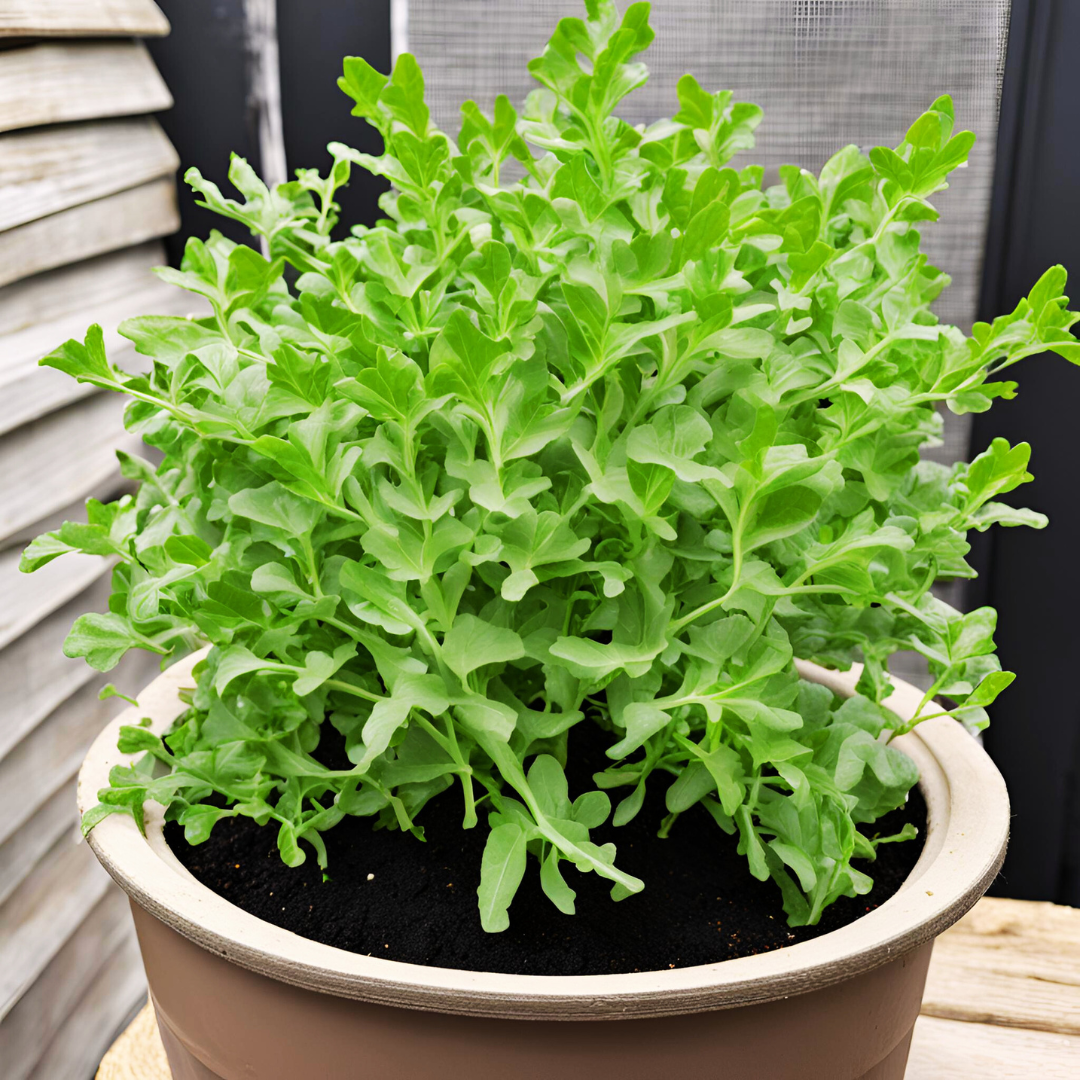
20. Arugula
Arugula is a peppery salad green that grows quickly and thrives in containers.
- Growing Tips: Use a container at least 8-10 inches deep. Sow seeds directly in well-draining soil and space them to allow for growth. Arugula prefers cooler temperatures, making it ideal for spring and fall planting.
- Care Tips: Keep the soil moist and water regularly, especially in dry conditions. Fertilize lightly every few weeks. Harvest young leaves for a milder flavour, and continue to pick to encourage new growth.
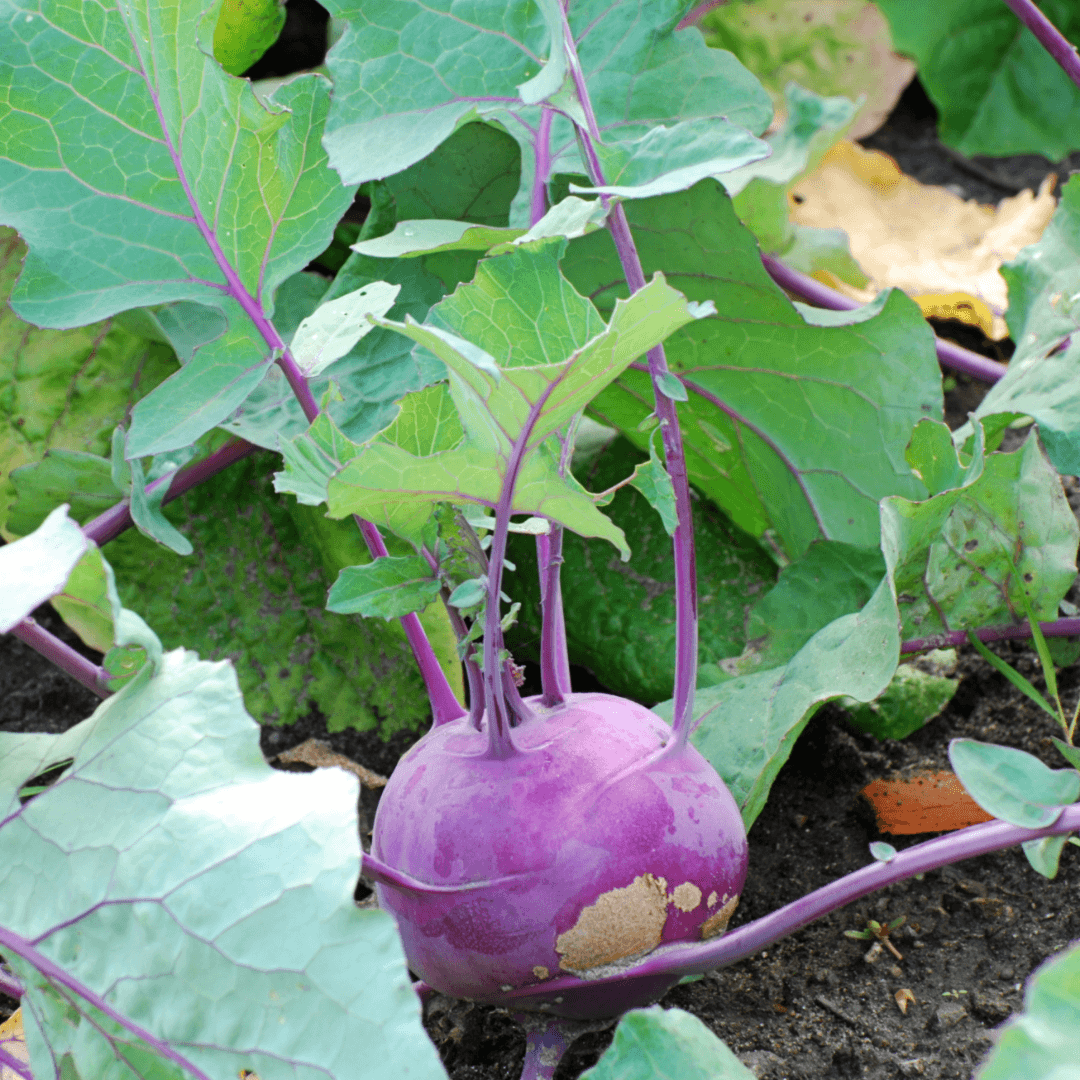
21. Kohlrabi
Kohlrabi is a unique addition to the list of container-grown vegetables. It thrives in containers and offers a crunchy, mild flavour.
- Growing Tips: Choose a container that’s at least 12 inches deep. Sow seeds directly or transplant seedlings in nutrient-rich, well-draining soil. Kohlrabi thrives in cooler temperatures, making spring and fall ideal for planting.
- Care Tips: Water the bulb frequently to keep the soil continuously moist. Fertilize lightly every few weeks to support growth. Harvest when the bulb is 3-4 inches in diameter for the best flavour and texture.

22. Spinach
Spinach prefers cool conditions and partial shade. Use a container that's at least 6-8 inches deep.
- Growing Tips: Start seeds directly in the container or transplant seedlings. Spinach grows best in nutrient-rich soil with a pH of 6.0 to 7.0.
- Care Tips: Water spinach consistently, keeping the soil moist but not soggy. Plant in cool weather with partial sunlight. Mulch to retain moisture and prevent weeds. Harvest young leaves for the best flavour and continuous growth.
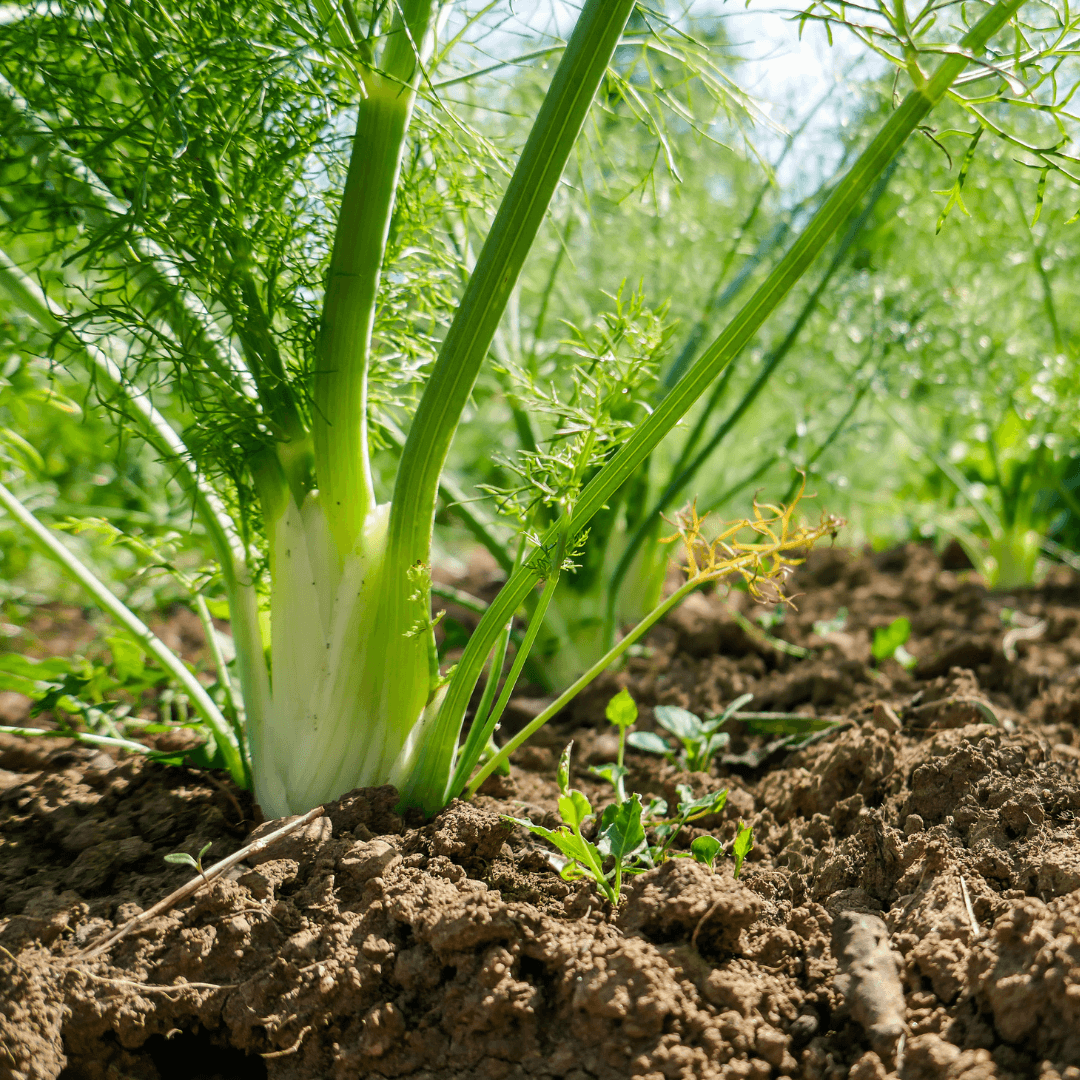
23. Fennel
Fennel is a flavourful herb with a bulbous base that grows well in containers. It adds a unique taste to dishes.
- Growing Tips: Use a container that’s at least 12 inches deep. Sow seeds directly in well-draining soil, providing full sun for optimal growth. Fennel can take longer to mature, so be patient.
- Care Tips: Water consistently to moisten the soil, but avoid overwatering. Apply a balanced fertilizer every few weeks. Harvest the bulb when it reaches a size of about 3-4 inches for the best flavour.
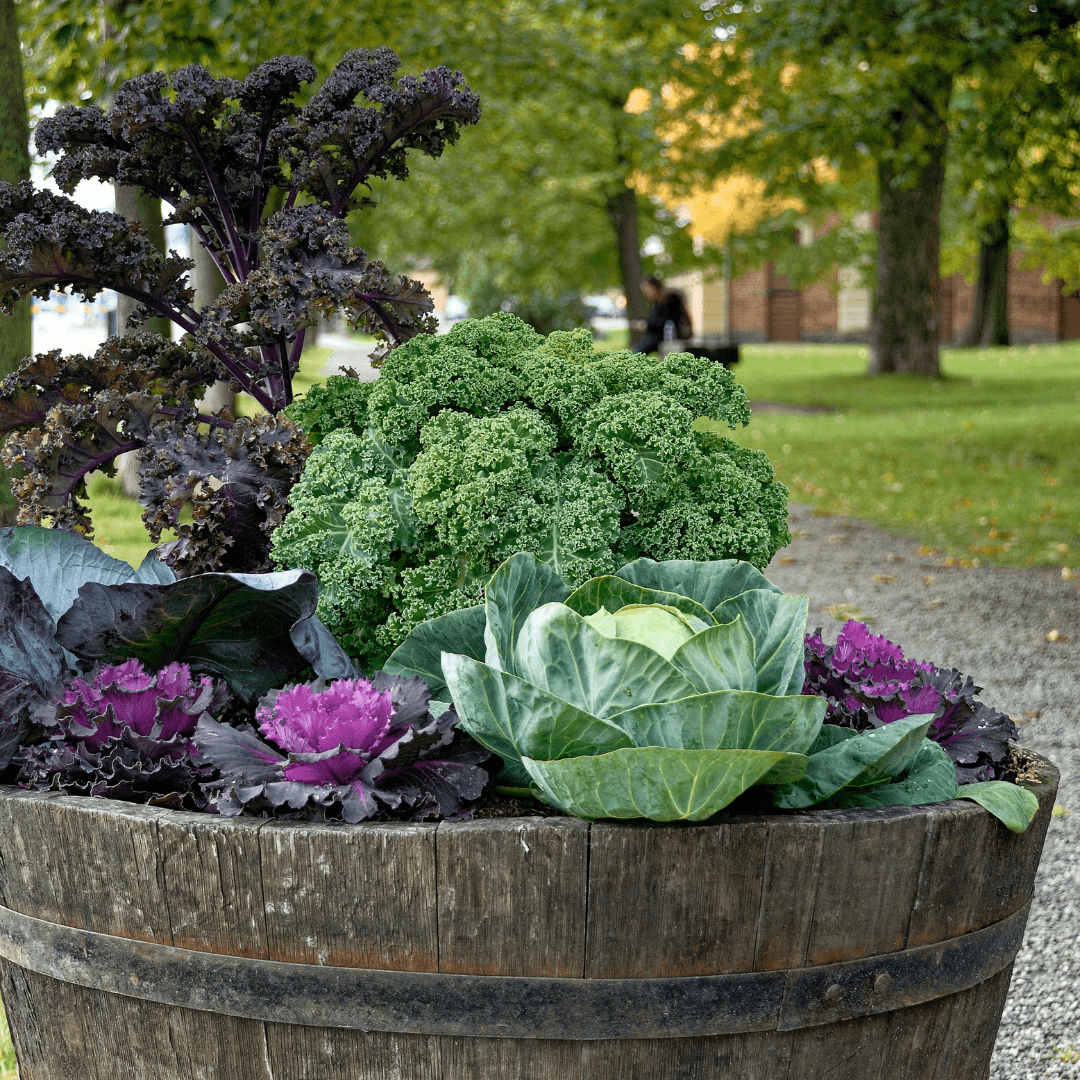
24. Cabbage
Cabbage can thrive in containers, providing a versatile vegetable for various dishes.
- Growing Tips: Choose a container at least 12-14 inches deep. Sow seeds or transplant seedlings in rich, well-draining soil. Cabbage prefers cooler temperatures, making it ideal for spring and fall planting.
- Care Tips: Water regularly to maintain consistent moisture in the soil. Fertilize using a balanced fertilizer every few weeks. Harvest heads when they feel firm and solid for the best quality.
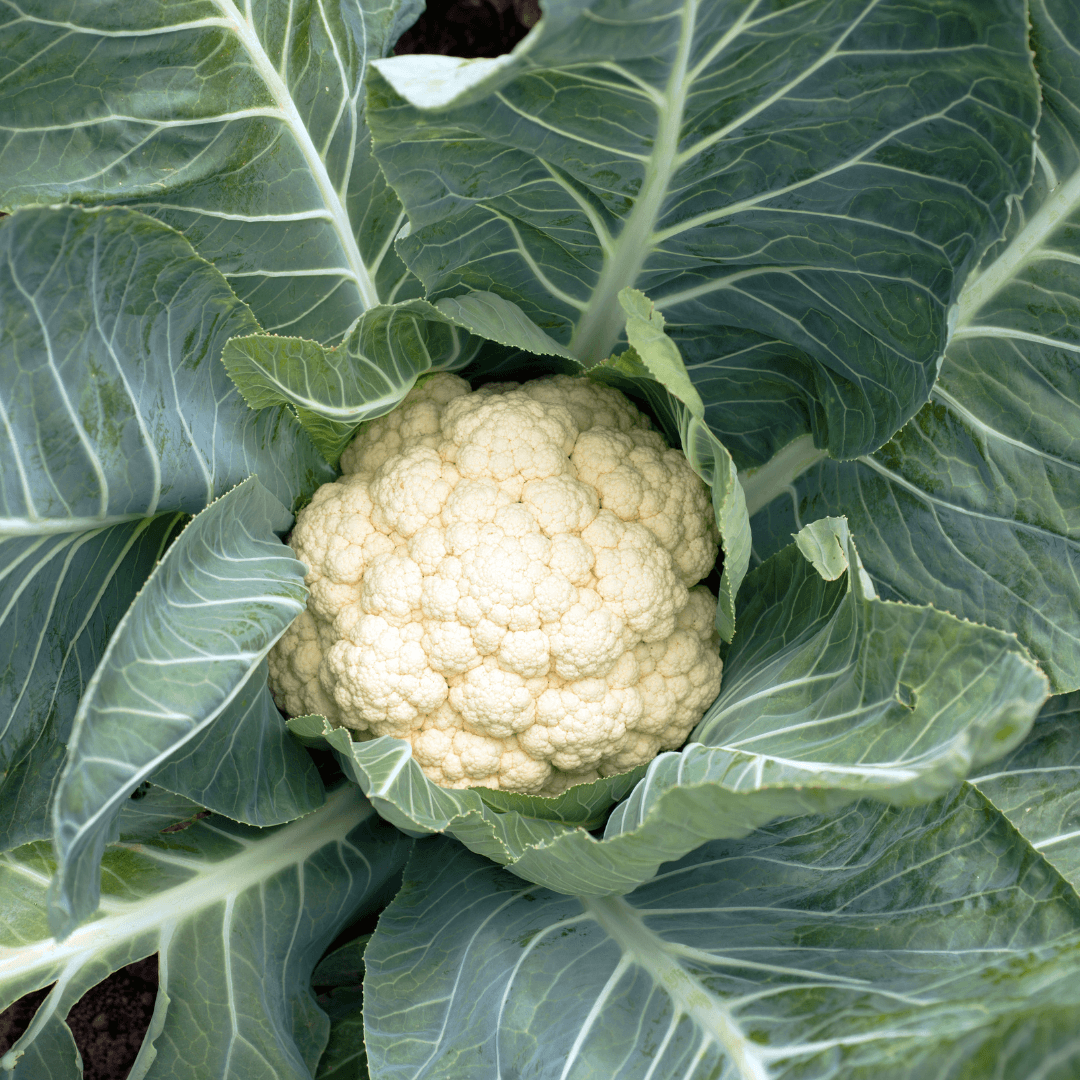
25. Cauliflower
Growing cauliflower in pots is a successful way to enjoy this nutritious crop.
- Growing Tips: Use a container at least 12-14 inches deep. Sow seeds directly or transplant seedlings in nutrient-rich soil with good drainage. Cauliflower prefers cooler weather, so spring or fall planting works best.
- Care Tips: Water consistently to keep the soil moist but not soggy. Fertilize lightly every few weeks, especially as heads form. Harvest when heads are compact and before they flower for the best taste.
FAQ
1. What Kinds Of Containers Work Best For Growing Vegetables?
Plastic, clay, and fabric pots work well. To avoid waterlogging, make sure they contain drainage holes. The size should vary depending on the vegetable, with larger containers for deep-rooted plants.
2. How Do I Prevent Pests In Container Gardens?
Regularly inspect plants for signs of pests. You can use natural repellents, introduce beneficial insects like ladybugs, or employ barriers such as row covers to protect your container garden.
3. What Is The Best Soil Mix For Container Gardening?
Use a premium potting mix made specifically for pots. It should provide good drainage and aeration. Mixing in organic matter, like compost, can enhance soil fertility and structure.
4. How Often Should I Water My Container Vegetables?
Watering needs depend on the plant and weather. Generally, check the soil moisture daily and water when the top inch feels dry. Containers often dry out faster than garden beds, especially in hot weather.
Conclusion
Container gardening opens up possibilities for growing container-grown vegetables regardless of space limitations, allowing you to enjoy fresh, homegrown produce from your balcony or patio.
You can enjoy fresh, homegrown produce from your balcony or patio by choosing the right containers, vegetables, and care practices.
Container gardening's versatility allows for creativity and customization, making it ideal for novice and experienced gardeners.
Embrace the joy of nurturing plants and savour the rewards of your hard work. With the right approach, your container garden can flourish, bringing beauty and bounty to your home.
I trust you enjoyed this article on Container-Grown Vegetables. Please stay tuned for more blog posts soon. Take care!
JeannetteZ
>>>Please click here to read my all-inclusive article, About The Essential Companion Planting Guide<<<
>>>Please click here to read my all-inclusive article about Container Gardening<<<
>>>Are you interested in homegrown herbs and medicine? Please click here to find out more about it!<<<
Your Opinion Is Important To Me
Do you have thoughts, ideas, or questions? I would love to hear from you. Please leave me your questions, experiences, and remarks about this article, Container-Grown Vegetables, in the comments section below. You can also email me at Jeannette@Close-To-Nature.org.
Disclosure
This post may contain affiliate links. As an Amazon Associate and other affiliate programs, I earn from qualifying purchases at no extra cost to you. Please read my full affiliate disclosure.
You might also enjoy these blog posts:
How To Grow Wildflowers In Pots
The Power Of Sound Frequency Healing
How To Grow Prickly Pear Cactus
Complete Plant Propagation Techniques
Tips For Pitaya Growing In Your Backyard



